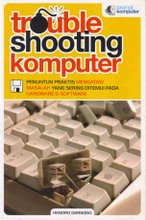A quality power supply is essential to a PC, especially for those who overclock or have numerous components and multiple hard drives installed. A power supply is the small, metal box usually located at the back of the PC that converts the AC current from your home to the DC current needed by the PC. The power supply is plugged into an eletrical outlet and then steps down the 110 volts (or 220) into the appropriate voltage and supplies it to the components in a PC. ATX-based power supplies are the standard now used in the PC industry.
VoltagePotential differences in an electrical charge creates a force called voltage. Voltage is measured in units called volts.
An ATX power supply provides five voltages:
* +12v
* -12v
* +5v
* -5v
* +3.3v
Wattage
The total amount of power needed to operate a component is wattage. Wattage is measured in watts with the formula Wattage = Volts * Amps. For example, 110 volts multiplied by 10 amps is 1,100 watts. Most new video cards and PC components recommend a power supply rated 350 watts and above.
Amps
The amount of electricity flowing through an electrical system is called current. Electrical current is measured in amperes or amps. An ammeter is used to measure electrical currents in amps.
Ohms
Electrical resistance is measures in Ohms. Resistance is a property that opposes the flow of electricity. The flow of electrons decreases as resistance increases and vice versa. Resistors are used to resist the flow of electricity.
(Source: http://www.pchardwarehelp.com/Power-Supply.php)





